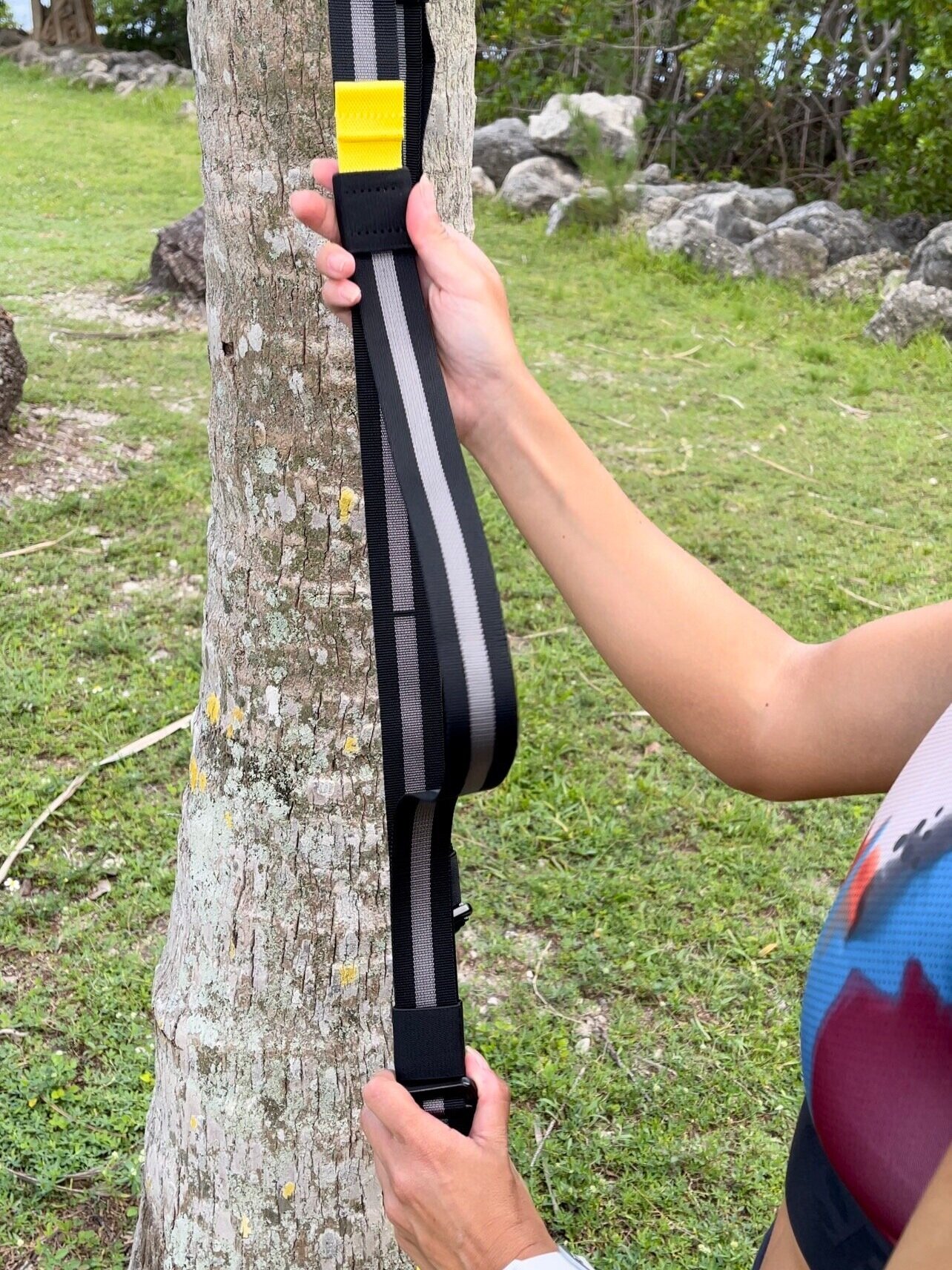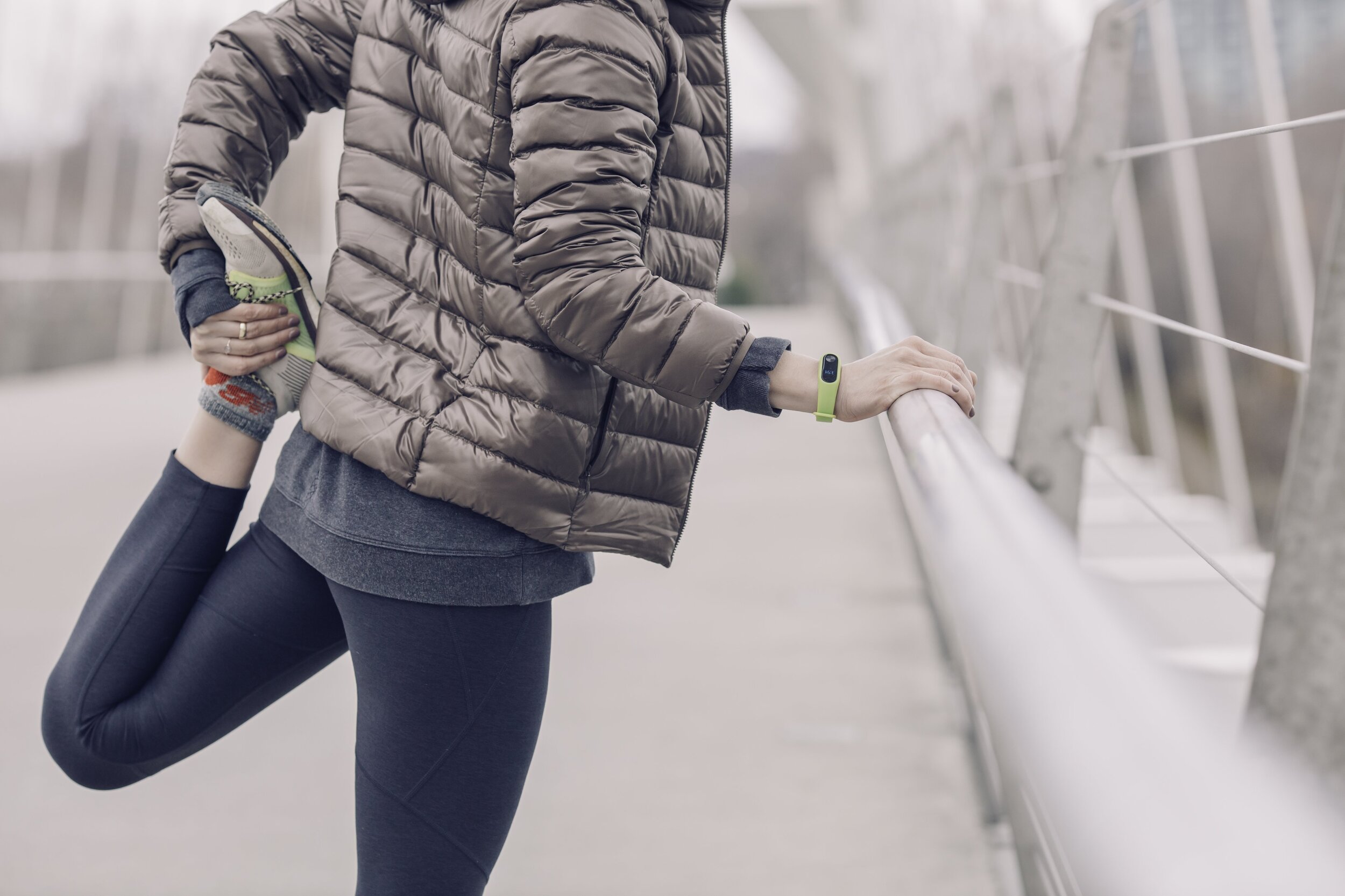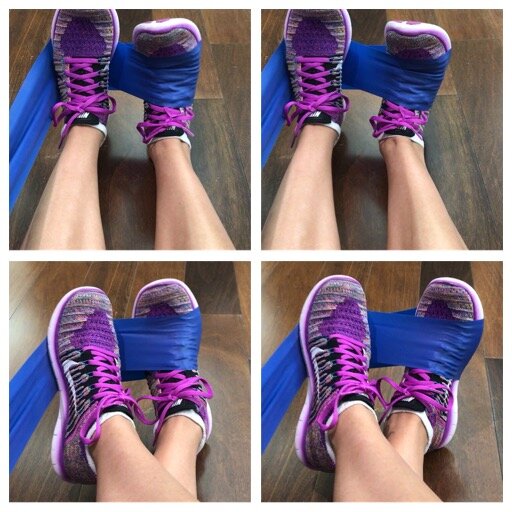It makes sense that foot problems are as common as any other issue in runners since it’s the body part that carries the most weight. It’s the first point of impact, too, so you can imagine how it looks on the inside with the dozens of components that make up just one foot. Yikes! Well, plantar fasciitis is on the top of the list of common running injuries and usually the most frustrating one to deal with. Read on to learn more about how I healed mine for good.
Read moreTRX Training: Your Best New Workout Partner
Sponsored by TRX. All opinions are my own.
Getting back into a strength training routine is exciting, but can be tough to maintain if you don’t see results right away. The key to sticking with it is to make sure you switch up your program often and choose exercises that you actually enjoy. I try my best to mix up my fitness routine with the gym, home workouts, and outdoor sessions at the park. You don’t need bulky gym equipment and cardio machines to get results. You can get an effective workout anywhere with simple bodyweight exercises and minimal equipment.
I used to avoid brining much equipment with me to the park, since it can get heavy to carry and take a while to set up. I’d end up just focusing on bodyweight and resistance band exercises. For years I’ve watched videos on the TRX straps and have used them a couple of times at local gyms, so I decided to give them a try all over again. I’m so happy I finally took the leap and got myself the TRX Home2 System! They come in a small carrying case and are extremely lightweight, so they are easy to take anywhere. I will definitely bring these along when I travel!
I first used the TRX Home2 System at home by simply using the door hanging option. It was simple to install and remained secure throughout my entire workout. The TRX straps come with a suspension strap that you easily wrap around a beam, pole, or safely around a tree trunk, like I did for my park workout. Adjusting the length of the straps is even easier! The entire setup took me less than a minute, so I highly recommend the TRX straps if you are looking for a quick workout option you can take anywhere!
The best part about the Home2 System is the versatility. I am able to get in strengthening exercises, mobility work, and stretching. It’s the best all-in-one workout partner! As a runner, these are all important to be able to improve my paces, keep my core strong, and prevent injuries. Shifting the angle of the straps while working out can make the moves more challenging, so you can pretty much guarantee continued improvement in strength and avoid plateauing. My favorite moves are the variety of abdominal exercises I am able to do like plank variations and elevated sit-ups.
I’ve been using the TRX Home2 System about three times per week now and love the challenge! Whether your goals are to get strong, lean, more flexible, or rehab from an injury, TRX can help you get results fast without ever getting bored. Have you tried the TRX Home2 System straps yet?
Mobility Exercises Every Runner Should Be Doing
If you are a runner, then you have probably been told about how important it is to warm up before heading out for your workout. Some of us get a few stretches in and go straight to the run and others are usually short on time so skip it all together. You have probably heard static stretching, such as a prolonged quad pull, is not a good idea before running. This usually elongates and relaxes your muscles, which is something you do not want when you are getting ready to run fast. Instead, we are told to incorporate dynamic stretching, which is actually a mobility exercise rather than a flexibility exercise.
Having good flexibility means you can passively move your joints and muscles through a wide range of motion—passively meaning ‘in a relaxed state’. Having good mobility, on the other hand, means you can actively move your muscles and joints through a normal range of motion, but with proper form and strength. Many runners incorporate stretching before or after runs to treat or prevent tightness in the muscles, which is common in the hamstrings, hip flexors, and calves for the most part. Although tightness can relieve, the actual joint can remain stiff, causing poor running mechanics, which affects stride length, push-off, and torso rotation. All of these outcomes will create inefficient running limiting you from reaching faster paces, as well as increasing the risk of injury.
Ankle Mobility
It is best to include a 10 to 15-minute mobility warm-up routine before every run. This will assure you are properly warm and ready to hit the road (or trails or track). A good plan is to begin with the lower, smaller joints and work your way up. The following ankle mobility drills will get you ready to push off the ground with your full range of motion and keep your calves from overworking.
Rocking
Forward and backward ankle rocking involves the dorsiflexors and plantarflexors of the ankle. While standing, lift the forefoot and toes as high as you can and rock forward to lift the heels. Continue rocking forward and backward for 15 reps or 30 seconds. Rocking with lateral movements will involve the invertors and evertors of the ankle/foot joint. Lift the inner part of the foot while weight bearing on the outer edge and rock the ankles to switch and weight bear on the inner foot.
Rolling
In a seated or lying position with feet unsupported, roll the ankles making circles in both directions—clockwise and counterclockwise. This is a great exercise to do before getting out of bed in the morning, especially if you have issues such as plantar fasciitis. Besides making circles, you can also try writing out the alphabet with your ankles and toes.
Knee Mobility
Circles
Stiffness in the knees is a common complaint from runners. Mobility exercises can help ease this stiffness and create more efficient running mechanics so that the knees do not bear too much pressure during the run. While standing bend your upper body forward and place your hands on your knees. Rock the knees in small circles in both directions for a maximum of 30 seconds.
Quad Pulls
Just like a regular static quad pull stretch in standing, you can incorporate a dynamic version for mobility. Grab your right foot with your right hand behind your back and hold for two to three seconds. Alternate legs until you reach 30 seconds.
Hip Mobility
Glute Pulls
The hips are probably the biggest problem area for runners when it comes to proper mobility. Hip Stiffness and lack of mobility is the cause of short strides, decreased upward knee drive after push-off, and limited torso rotation. Glute pulls, similar to the quad pulls for the knees, will help mobilize the back side of the hips. While standing, lift your knee to your chest and hug tightly for two to three seconds. Alternates sides for 30 seconds total.
Military March
Tightness in the hamstrings’ connections to the hip and knee joint can cause stiffness that limits stride length and upward knee drive as well. Kick up the right leg as high as you can and reach your left hand to the right foot. Switch kicks for 30 seconds.
The Rest of the Body
The legs aren’t the only parts that need to move while running. The arms and trunk need their proper mobility, as they help propel the body forward and stabilize the hips, respectively. Arm swings are easy to do during your walk towards your starting point. Standing upper trunk rotations for a few seconds mobilizes your hips and spine. Lastly, neck mobility can be incorporated for a few seconds as well such as with clockwise and counterclockwise circles. As mentioned, these warm-up exercises will take 10 to 15 minutes and can also be done at other times during the day. After just a few weeks of consistent mobility work, you will notice the improvements in not only your stiffness but also your running form!
Got Shin Splints? Learn How to Treat & Prevent This Annoying Injury
One of the most annoying, but significantly common, running injuries is shin splints. Well, this is the usual diagnosis from a doctor or other medical professional when you tell them you have pain in the front part of your lower leg, even without examining you first. Besides learning how to treat and prevent this issue, it is important for athletes to understand the symptoms and different diagnoses that are associated with shin splints in the first place, since there are other similar injuries that can be career (and life!) threatening.
“Shin Pain” Causes
The number one cause of pain in the shins is overuse. You will hear from many doctors and physical therapists that biomechanical factors—think: flat feet, heel striking and overpronating, are the main cause, but it actually has more to do with overloading in general. Yes, these factors contribute to pain and other problems, but without the “overuse” part, most injuries wouldn’t occur. When it comes to runners, those who skip strength training and run excessively are more prone to any overuse injuries. It can be difficult to keep up with other exercises when your mileage builds up and you have a life outside of running, but this is when it is most important.
Differential Diagnosis
A specific condition that often times gets overlooked when diagnosing shin splints is compartment syndrome. Although distance runners will have the less dangerous type—chronic compartment syndrome, it is important to note the symptoms of the acute version, which can be life threatening. This condition consists of increased pressure in the lower limbs from “trapped” fluid. It mimics shin splints in the sense that there is achiness in the shin bone and surrounding areas during activity. With compartment syndrome, this pain rapidly worsens during activity and almost feels like “congestion” in the lower limbs. If you are experiencing similar symptoms, DO NOT continue running and seek medical care as soon as possible!
Stress fractures are often times caused by prolonged shin splints due to the increased use of already inflamed muscles and weakening of the tibia (shin bone). This weakening is the result of degeneration of the bone from overuse. Proper treatment of shin splints can lead to a fast recovery, but it is not the case with a stress fracture. Training through shin pain to the point that it leads to a stress fracture will only delay your progress and cause you to sit out of running for months.
Treating Shin Splints
The first step to recovery is rest (as it is with almost every injury). Start by taking a few days off and icing the area of pain three times per day if you can. Initially it is best to figure out what caused your shin splits to begin with, which is usually a combination of tight calf muscles, weak lower leg and ankle muscles, and inefficient strength of muscles higher up in the body such as the knees, hips, and core. Once the pain is under control and any swelling has relieved, then a gradual progression of strengthening and flexibility exercises should be incorporated. Below are simple ankle exercises used to strengthen the muscles that run down the entire lower leg, as well as stretching techniques for both groups of calf muscles.
When easing back into running, it is a good idea to rotate between different types of shoes throughout the week. Alternating surfaces is also helpful. Try switching between the road, grass, treadmill, and track to relieve pressure in different areas of the feet and legs. For runners who overpronate, choose shoes that help correct your foot strike, or wean into a pair of orthotics that help align your feet. Of course, if any pain starts to trickle back into the picture, take a few days off, ice, and keep working on the exercises. You should always continue strengthening and stretching a few times per week, even if your treatment is successful, in order to prevent shin splints and many other problems in the future.













